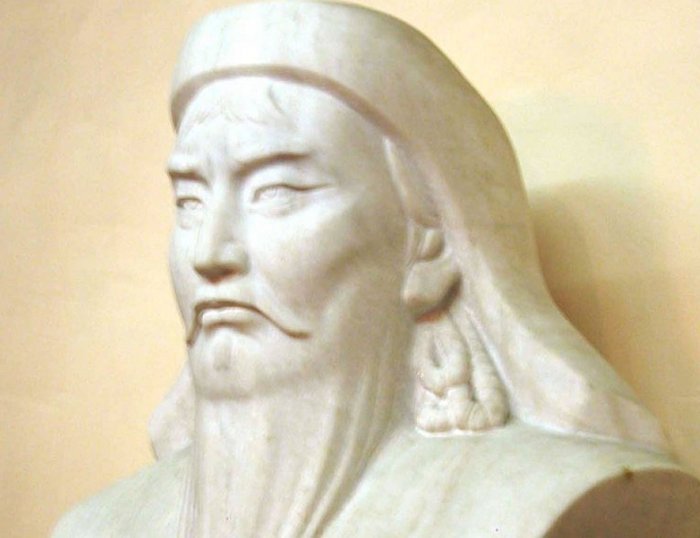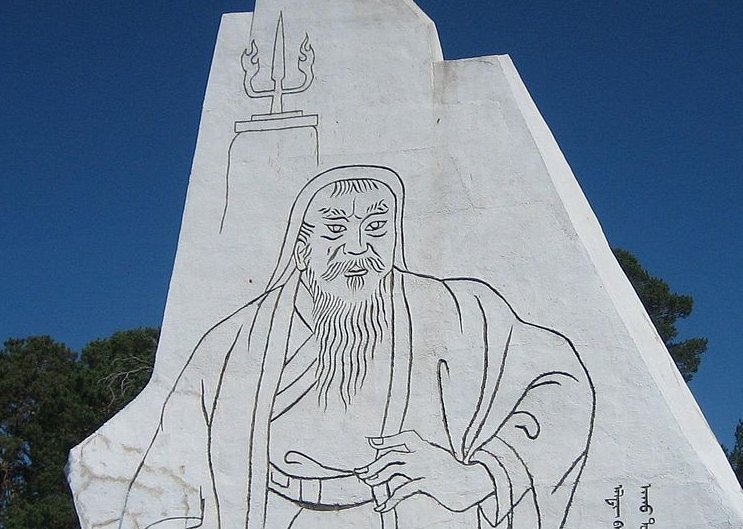Genghis Khan – Conqueror Of Nations, Ruler Of People
David Tee - AncientPages.com - Genghis Khan is a title, not a name. Genghis Khan was born with the name "Temujin." The name means "blacksmith" or "one who forges.
The Mongols use the word Khan to denote position or authority. So when we read his name, Genghis Khan, we are saying Genghis, the ruler, or Genghis, the ruler.
A bust of Genghis Khan adorns a wall in the presidential palace in Ulaanbaatar, Mongolia. Image credit: Jim Garamone, American Forces Press Service - http://www.defense.gov/ via wikipedia
The title Khan is also used in India and other Asian countries with the exact definition. Whether this was an independent use or influenced by the Mongol ruler and his heirs is unknown.
Genghis's Start
Historians have discovered quite a bit about Genghis Khan (1162 - 1227). His father, Yesukai, ruled over 40,000 Mongol families. His mother, Hoelun, was taken prisoner by his father's people and forced to marry his father.
Genghis displayed such leadership qualities that even his older brothers and other clan leaders called Temujin their leader. It was before he assumed his father's place upon the latter's death.
When Temujin reached 9, his parents arranged a marriage with the 10-year-old daughter of Dai Sechen, the leader of another tribe. But little else is known about Genghis' early years apart from this information.
Genghis Khan’ s Rise To Power
Since the Mongol people had no natural written language before Genghis Khan turned the people into rulers of a large empire, it is hard to determine his exact rise to power. Legends say that before he got powerful, Genghis was a captive of the Jin Dynasty, and the Merkit captured his wife.
Memorial monument of Djingis Khan outside Dadal which is a possible birthplace. Image credit: I, Chinneeb/Wikipedia
Another legend states that he eventually grew up and served Ong Khan. He was such a faithful servant that Ong Khan made Genghis his heir even though he was not his son. It led to conflict with the Kan's natural son, whom Genghis had to defeat to gain supreme rule over all the Mongols.
Once this conflict was over, Genghis took the title Universal Ruler, which is what the name and title Genghis Khan mean.
Genghis Khan And The Law
After he was recognized as the Supreme Ruler of the Mongols and the world, Genghis Khan worked on revising the law. Some of his changes may have been influenced by his mother's situation and his own.
One of his first acts was to ban or make illegal the kidnapping of women. He also declared that selling women for marriage was illegal. Then, he stated that all children were legitimate in the eyes of the empire, no matter who their parents were.
Other accomplishments included the regulating of hunting. This act made more meat available to all people. He also made the stealing of animals a capital offense. Even taking lost property was considered to be theft in his eyes.
Genghis Khan began record keeping and had the Mongol language put down on paper. He also created official seals and an official who oversaw all judicial decisions, plus he had the power to give the death sentence if needed.
Genghis Khan's Military Conquest
Part of having the favor of the people and the gods, Genghis Kahn had to continue to prove himself militarily. Most of his conquests remained in the north of India, Kashmir, and the Caspian Sea.
Genghis could conquer much of China, but south of Beijing was out of his reach. His conquests also included some of now Siberia and all of the Korean peninsula. These conquests cemented his role as the Supreme leader of the Mongols, and the people saw that he had the favor of the gods, so they remained loyal to him.
Genghis Khan's Death
He was in a battle against the Tangut people when life and death caught up with him. Genghis Khan seems to have died (1227 AD) not of a fatal blow from an enemy or a traitor but of natural causes.
His tomb is not extravagant by any means, yet its location has been unknown since the end of the Mongol Empire. Some believe it is hidden in the Khentii Mountains and protected because it is cursed. On his death, his son Ogedai replaced him as ruler and reigned until AD 1241.
Written by – David Tee - AncientPages.com Staff Writer
Updated on January 22, 2023
Copyright © AncientPages.com All rights reserved. This material may not be published, broadcast, rewritten or redistributed in whole or part without the express written permission of AncientPages.com
Expand for referencesMore From Ancient Pages
-
 DNA Reveals Poland’s First Kings May Have Scottish Origin – New Study Challenges Existing Myths
DNA | Jun 20, 2025
DNA Reveals Poland’s First Kings May Have Scottish Origin – New Study Challenges Existing Myths
DNA | Jun 20, 2025 -
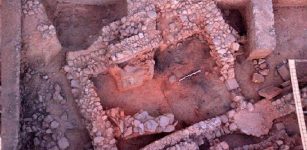 Exciting discoveries made by archaeologists in Laconia
News | Aug 25, 2015
Exciting discoveries made by archaeologists in Laconia
News | Aug 25, 2015 -
 Archaeologists Examined Ancient Houses To Learn About History Of Inequality
Archaeology | Apr 16, 2025
Archaeologists Examined Ancient Houses To Learn About History Of Inequality
Archaeology | Apr 16, 2025 -
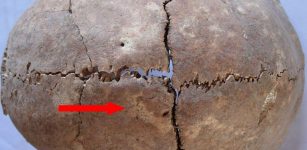 Physical Violence In Ancient Mesopotamia Much Less Common Than Ancient Texts Suggest – New Study
Archaeology | Mar 29, 2017
Physical Violence In Ancient Mesopotamia Much Less Common Than Ancient Texts Suggest – New Study
Archaeology | Mar 29, 2017 -
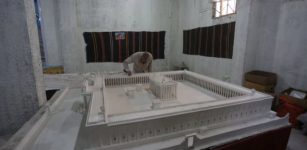 Memory Of Palmyra’s Ancient Ruins Preserved Thanks To One Man’s Dedication And Mini Models Of Lost Temples
Archaeology | Mar 24, 2021
Memory Of Palmyra’s Ancient Ruins Preserved Thanks To One Man’s Dedication And Mini Models Of Lost Temples
Archaeology | Mar 24, 2021 -
 Was Pocahontas A Real Historical Person?
Featured Stories | Feb 20, 2019
Was Pocahontas A Real Historical Person?
Featured Stories | Feb 20, 2019 -
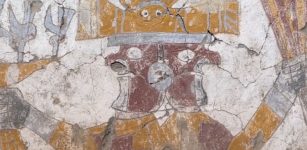 Ancient Murals Of Mysterious Two-Faced Beings And Supernatural Creatures At Pañamarca, Peru
Archaeology | Mar 21, 2023
Ancient Murals Of Mysterious Two-Faced Beings And Supernatural Creatures At Pañamarca, Peru
Archaeology | Mar 21, 2023 -
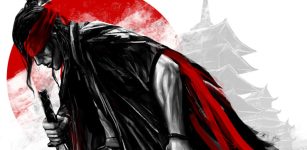 Shinobi No Mono: The Shadow Warriors And Hattori ‘The Demon’ Hanzo Of Ancient Japan
Featured Stories | Apr 8, 2016
Shinobi No Mono: The Shadow Warriors And Hattori ‘The Demon’ Hanzo Of Ancient Japan
Featured Stories | Apr 8, 2016 -
 Huge, Stunning 2,000-Year-Old Marble Statues Restored In Ashkelon, Israel
Archaeology | Sep 17, 2024
Huge, Stunning 2,000-Year-Old Marble Statues Restored In Ashkelon, Israel
Archaeology | Sep 17, 2024 -
 Askeladden – Little Trickster That Succeeds Where All Others Fail
Featured Stories | Mar 23, 2018
Askeladden – Little Trickster That Succeeds Where All Others Fail
Featured Stories | Mar 23, 2018 -
 Archaeological Discovery Of “Once-In-A-Lifetime” Medieval Gold Necklace In Britain
Archaeology | Dec 6, 2022
Archaeological Discovery Of “Once-In-A-Lifetime” Medieval Gold Necklace In Britain
Archaeology | Dec 6, 2022 -
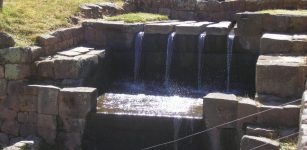 Tipón (Tipon): Who Taught The Inca How To Build Artificially Irrigated Garden?
Ancient Technology | May 1, 2019
Tipón (Tipon): Who Taught The Inca How To Build Artificially Irrigated Garden?
Ancient Technology | May 1, 2019 -
 Rare 2,700-Year-Old Seal Of Biblical King Jeroboam II’s Servant Confirmed Authentic
Artifacts | Jan 18, 2021
Rare 2,700-Year-Old Seal Of Biblical King Jeroboam II’s Servant Confirmed Authentic
Artifacts | Jan 18, 2021 -
 Mystery Of The Tower Of Babel – The Mountain Of God Or A Symbol Of Chaos And Ignorance?
Ancient Mysteries | Oct 14, 2014
Mystery Of The Tower Of Babel – The Mountain Of God Or A Symbol Of Chaos And Ignorance?
Ancient Mysteries | Oct 14, 2014 -
 Mead Of Poetry: Odin Gave This Magical Potion To Gods, Valkyries And Humans
Featured Stories | Mar 18, 2017
Mead Of Poetry: Odin Gave This Magical Potion To Gods, Valkyries And Humans
Featured Stories | Mar 18, 2017 -
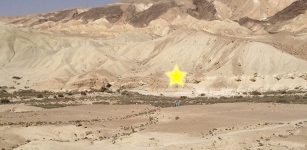 Negev Desert’s Ancient Site Tells Story About Humans, Neanderthals Coexistence
Archaeology | Jun 19, 2021
Negev Desert’s Ancient Site Tells Story About Humans, Neanderthals Coexistence
Archaeology | Jun 19, 2021 -
 Krampus Celebrations Are Becoming Dangerous – Historian Warns
Ancient Traditions And Customs | Dec 10, 2019
Krampus Celebrations Are Becoming Dangerous – Historian Warns
Ancient Traditions And Customs | Dec 10, 2019 -
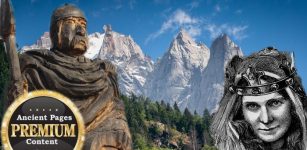 Ancient Mystery In The Alpes Remains Unsolved Because Of Contradicting Information
Ancient Mysteries | May 15, 2018
Ancient Mystery In The Alpes Remains Unsolved Because Of Contradicting Information
Ancient Mysteries | May 15, 2018 -
 Mounds In Louisiana, North America Offer Insight Into Middle Archaic Lifestyles
Archaeology | Dec 2, 2022
Mounds In Louisiana, North America Offer Insight Into Middle Archaic Lifestyles
Archaeology | Dec 2, 2022 -
 Nue – Mysterious Mythological Shape-Shifting Creature Transforming Into A Black Cloud
Featured Stories | Jun 12, 2020
Nue – Mysterious Mythological Shape-Shifting Creature Transforming Into A Black Cloud
Featured Stories | Jun 12, 2020

